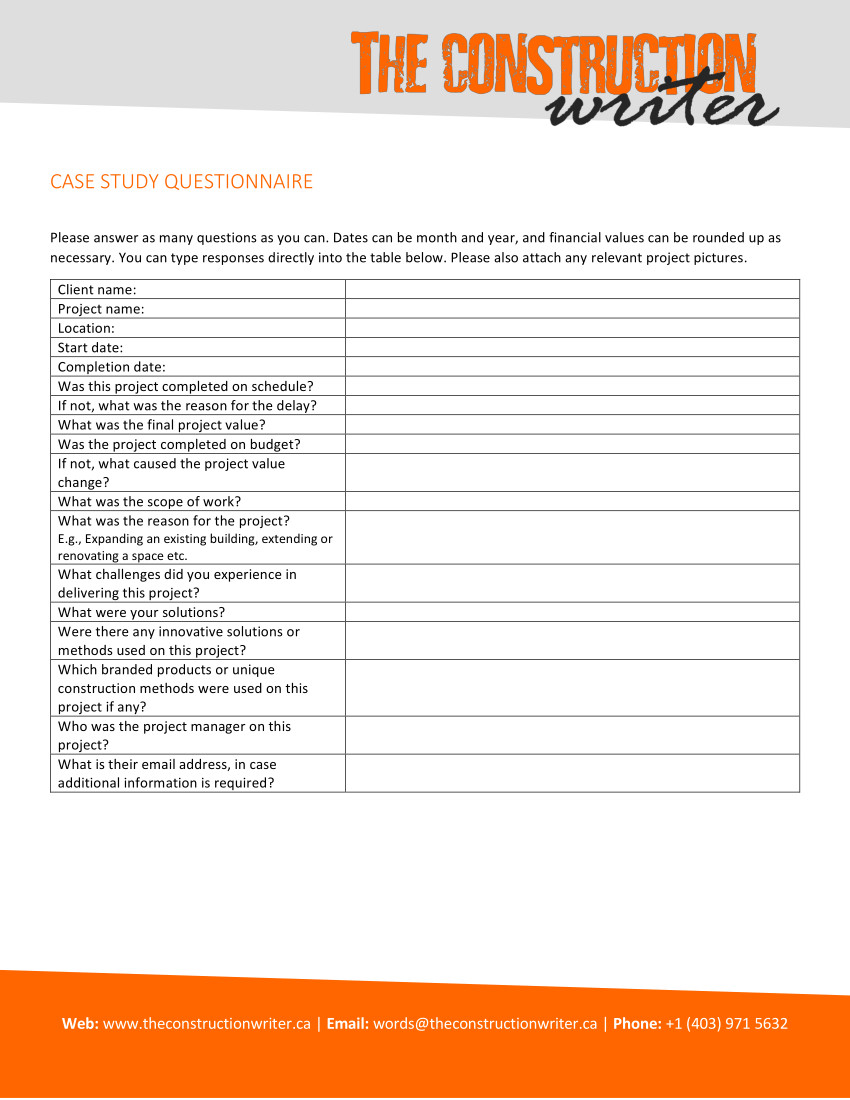
How to Write Construction Case Studies
Construction case studies are one of the best kinds of text-based content you can add to your construction website, and they're also a great opportunity to share images of your projects or create a project gallery.
Let's take a closer look at how you can write construction case studies for your website, no matter what industry, sector or specialty you focus on.
1. Download Our Construction Case Study Template
We write case studies very often, and we've found a formula that works really well for information gathering. Download the free case study template on this page so you can organize your thoughts and put all the relevant information on one page.
Download Our Explainer Video Here
2. Create Your Sections and Headings
When we write construction case studies, we usually work according to the same format, based on different headings and sections, which are usually:
- Project overview, which is a high-level summary of what you did during that project
- The problem or scope of work - every project is about solving a problem for a client, whether that's needing a new building for a specific purpose or expanding floor space during a renovation - this section should describe what the client needed to achieve
- The solution - describe how your company approached the problem and if there were any creative or innovative solutions used on the project
- Project budget - provide a brief description of the project budget and whether you came in under, on, or over budget, and don't forget to explain why!
- Project timeline - after money, one of the most important construction criteria is always time, so explain how you finished on time, or if you ran into challenges that affected timing, how you tackled them to minimize their impact
- Conclusion - wrap things up at the end by again highlighting the main successes on your project
It's important to note that case studies aren't all marketing and sales, and it's okay to admit there were challenges in your case study. Just make sure you also explain how you overcame those challenges.
3. Write Your Case Study
Once you've got your headings set up for your case study, it's time to get writing!
Case studies are intended for customers and end users, so they're usually not as technical as a white paper might be, but they tend to be a little more formal and less conversational than a blog post, so make sure your style and tone are based around that.
Like any other content you post on your website, you also need to ensure that you pay close attention to spelling and grammar as well as the flow of the piece. Try to use shorter sentences, avoid too much jargon, and don't repeat words if you can avoid it.
Use a proofing tool like Grammarly to double-check your case study before you publish it.
4. Optimize It
Case studies are fantastic for construction company content marketing because they usually contain location information, which is good for local SEO, but they are also a fantastic opportunity to include keywords and phrases on your website.
You can also link to service pages on your website from your case studies, and don't forget to add metadata and keywords when you publish your case study.
